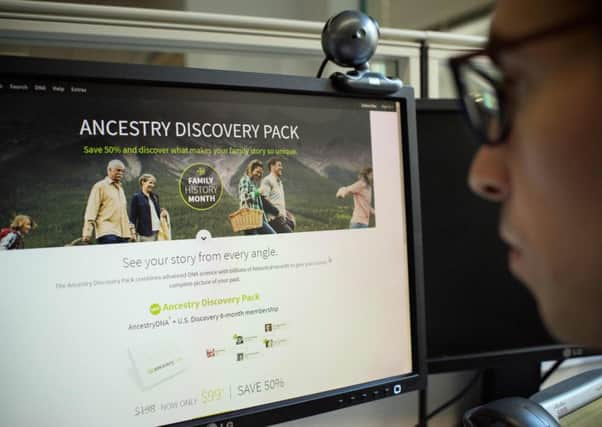Dr Gary Clapton: Helping adopted children find their lost relatives is in our DNA


This is why adopted people, and more recently those who have become estranged from their families as a result of being in care, welcome our search services.
No other public service offers such a comprehensive service, from the opportunity to walk in and talk with us, to having a professionally-compiled family tree, to understanding case records, all the way through to acting as an intermediary between families.
Advertisement
Hide AdAdvertisement
Hide AdHowever, nothing stays still, and the world of social media offers a quick fix for those who can’t wait to surprise a long lost relative. Web-based services, such as ancestry.com have been around for decades and these provide information and, as valuable though it may be, it is not necessarily insightful.
Also, in our experience, it is rare that satisfying curiosity stops at just a paper account of your family. Reaching out, especially on social media, is hard to resist on receipt of news of an existing relative and their whereabouts.
Sometimes bypassing professional services like Birthlink works. Sometimes. A wrong person may be picked out, and if you find the right one, who’s to know how you’ll be greeted?
These registers offer a place where the mutual expression of a wish to meet can be made, thus avoiding the embarrassment, or worse, of a rejection or rebuff in response to an unsolicited approach. However, as noted earlier, nothing stands still, and ancestry sites have set up their own registers. The most popular of these seems to be 23andMe.
23andMe is a new kid on the block (set up just over ten years ago) but with nearly 19 billion search results, it has far outstripped its rivals. This is because, like the others and as with the others, it offers instant connections based on the provision of DNA samples. The attraction is not hard to understand. Adopted or otherwise, who has not wondered whether they might be related to Napoleon or a princess?
The advantage of the DNA matching websites is, like those of the traditional contact registers, should a match turn up then matters can proceed between both parties in the knowledge that curiosity (at the least) is shared.
One 40-year old Scottish man we have begun working with has gone through the DNA website route and turned up a cousin in Alaska, and another in Arizona. Being adopted, he does not know whether anyone knows about him. The two US cousins might know of each other. But does anyone in his birth mother’s family know about him?
There are other considerations. As distinct from professionally-run contact registers such the Adoption Contact Register for Scotland run by Birthlink, many of these websites, like other web-only services, have rather lax policies as regards age of users. A tech-savvy child can easily sign up and provide their DNA sample.
Advertisement
Hide AdAdvertisement
Hide AdIn addition, when people can so easily be put in touch, there can be little or no ‘back story’ to help guide the process of getting to know each other.
Making a connection with a cousin might only be a start for someone who has been adopted, because the drivers for searching and contact in adoption is to get the stories of how they came to be given up and the nature of the relationship between their biological parents.
DNA and genetics are of high importance, for instance in establishing family histories of illnesses and also basic stuff such as hair colour, height and so on. But the lived experiences that resulted in your adoption are likely to be more elusive on social media.
This kind of insight can often only come from those who relinquished the child in the first place and it seems that there are much, much less parents on DNA matching registers than others. That brings us full circle back to the essentials of careful family history examination, polite and professional go-between work and respectful contact with people who are now elderly birth parents.
Dr Gary Clapton on behalf of Birthlink.